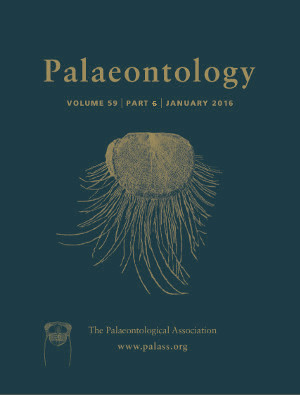Reg. Charity No. 1168330

A nearly complete radula with seven elements per row preserved inside of an isolated, bivalved, calcitic lower jaw (= aptychus) of the Late Jurassic ammonite Aspidoceras is described from the Fossillagerstätte Painten (Bavaria, southern Germany). It is the largest known ammonite radula and the first record for the Perisphinctoidea. The multicuspidate tooth elements (ctenodont type of radula) present short cusps. Owing to significant morphological differences between known aptychophoran ammonoid radulae, their possible function is discussed, partly in comparison with modern cephalopod and gastropod radulae. Analogies between the evolution of the pharyngeal jaws of cichlid fishes and the ammonoid buccal apparatus raise the possibility that the evolution of a multicuspidate radula allowed for a functional decoupling of the aptychophoran ammonoid jaw. The radula, therefore, represents a key innovation which allowed for the evolution of the calcified lower jaws in Jurassic and Cretaceous aptychophoran ammonites. Possible triggers for this morphological change during the early Toarcian are discussed. Finally, we hypothesize potential adaptations of ammonoids to different feeding niches based on radular tooth morphologies.